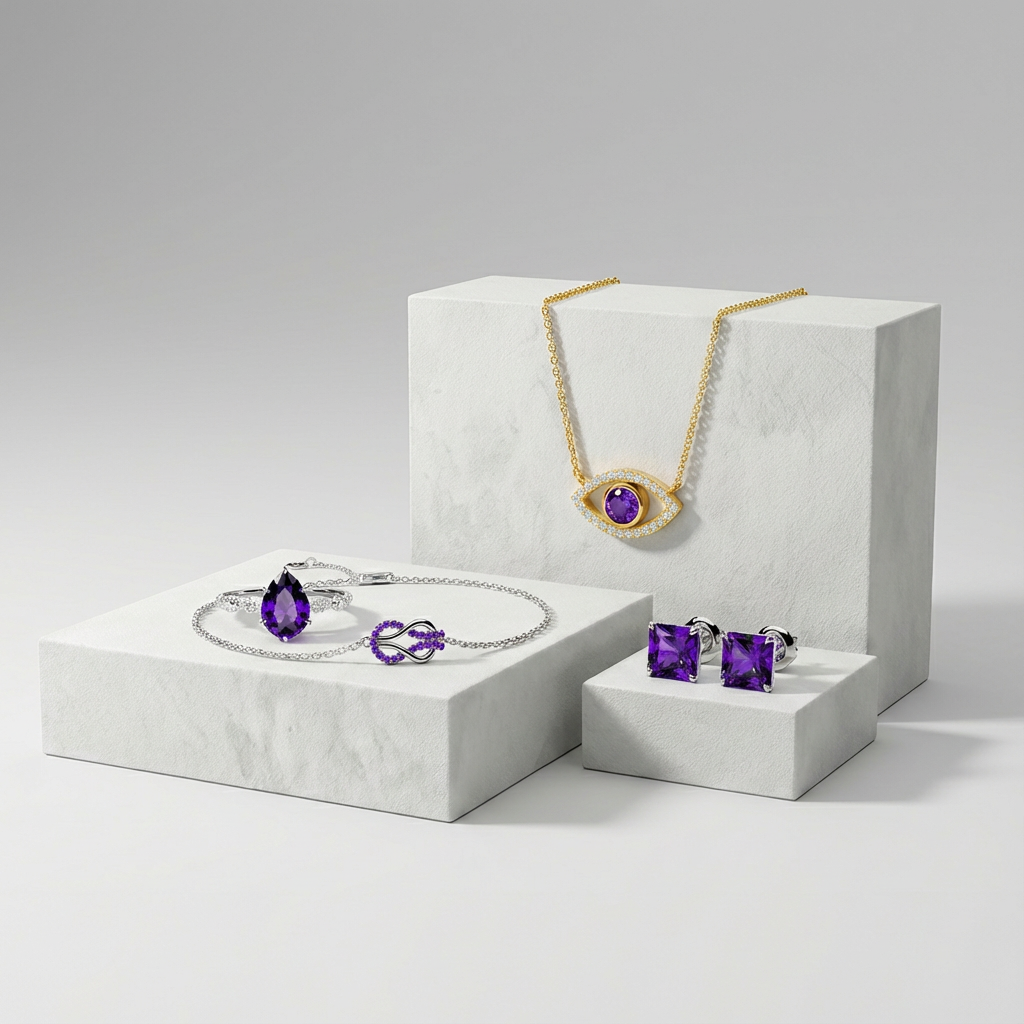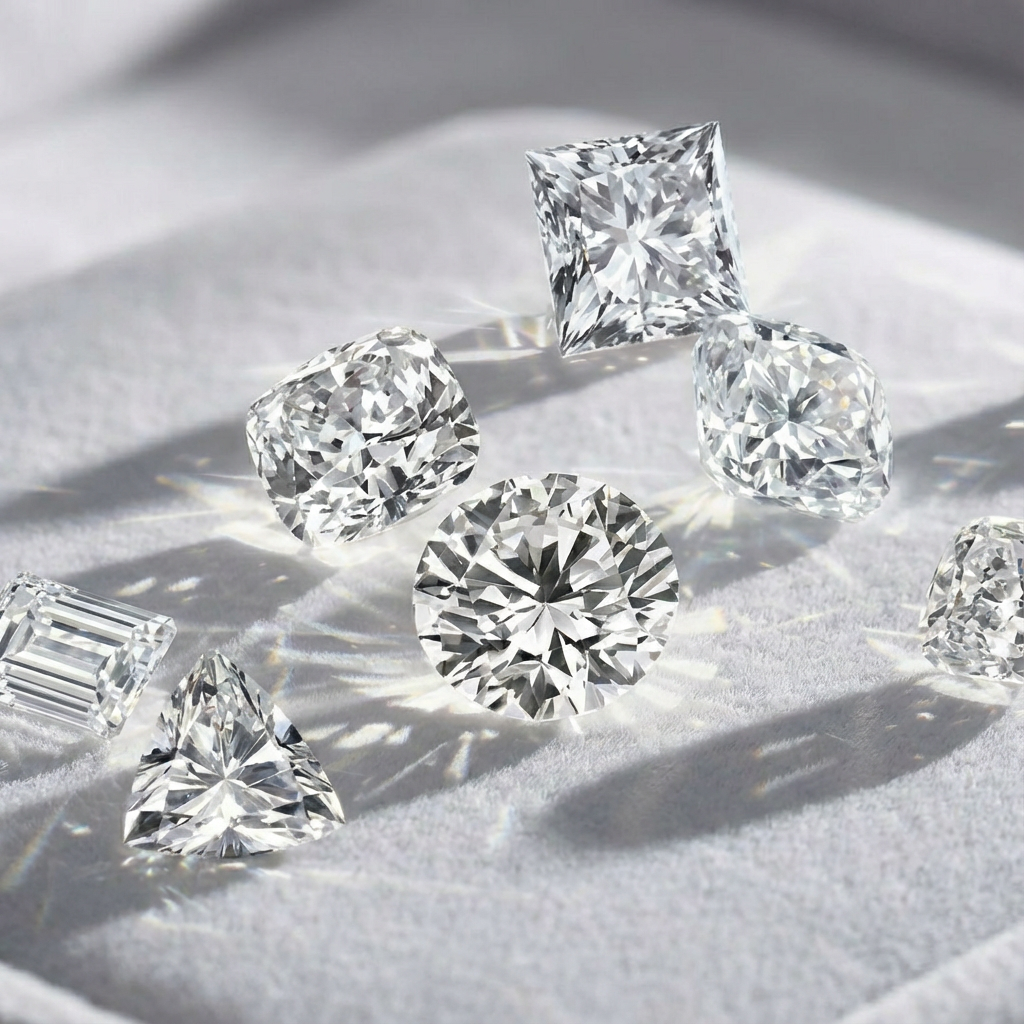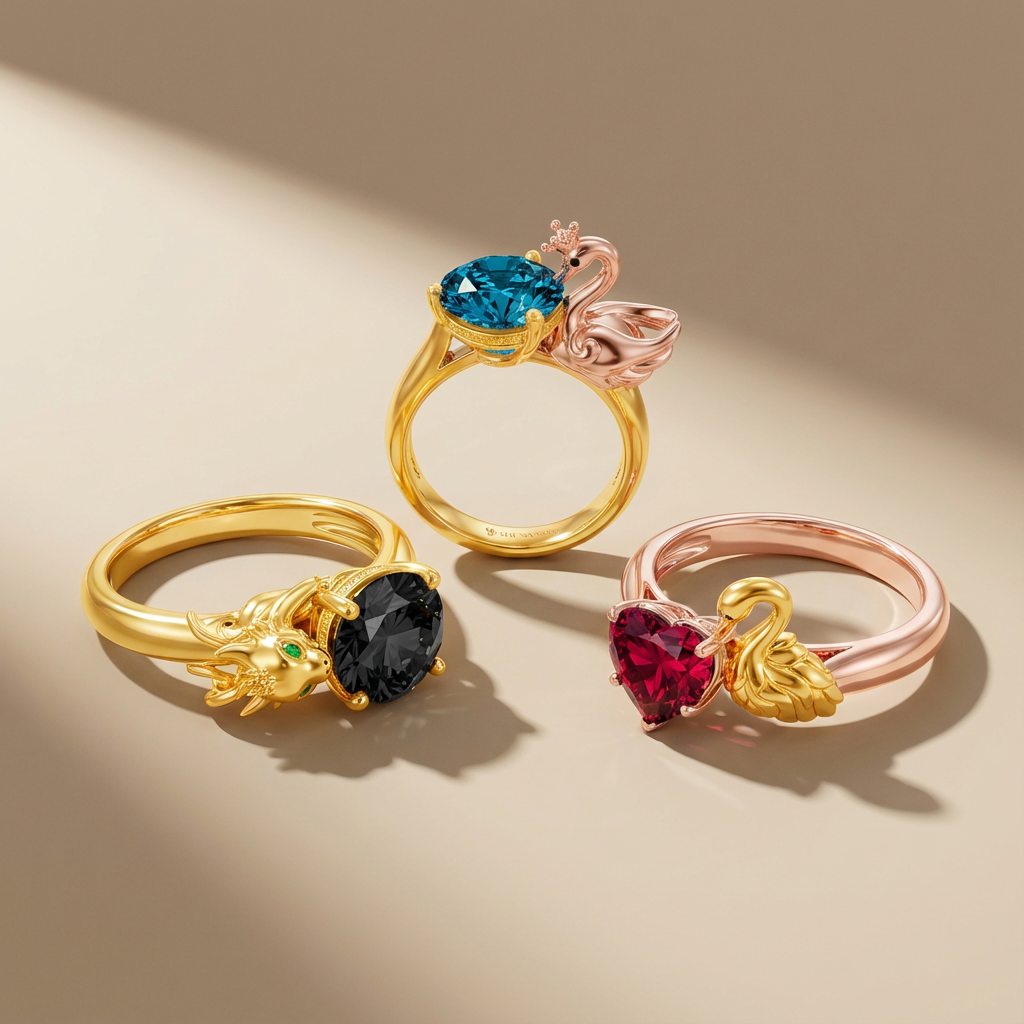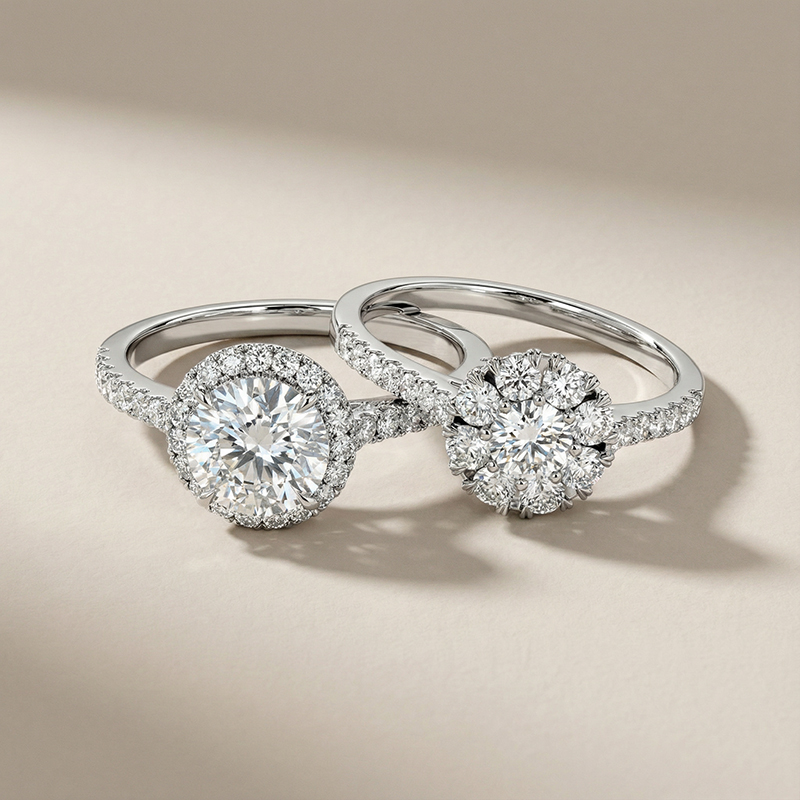Garnet, the birthstone of January, comes in a rainbow of colors thanks to its variety of species. Each type has distinctive features in shades of red, green, yellow, and more. Today, we will discover the defining qualities of garnet's seven main types, unearthing the splendor of this precious gemstone and its extraordinary palette of saturated shades.
Pyrope
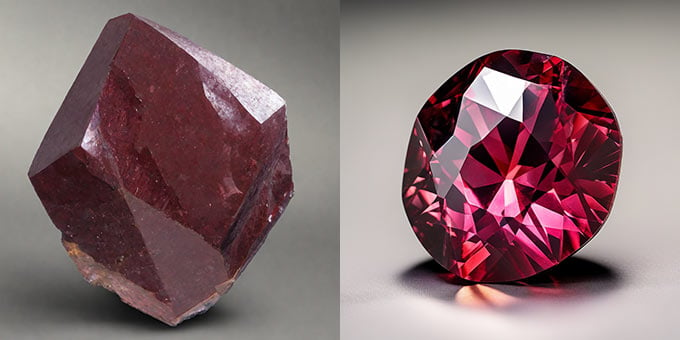
Pyrope garnet displays a vivid red coloration, deriving its name from the Greek word for “fire-like” due to its intense hue. Composed mainly of magnesium aluminum silicate, pyrope has a hardness of 7.5 on the Mohs scale. Typically found in serpentine-bearing metamorphic rocks, the purest crystal formations are transparent without inclusions, rendering complete specimens quite rare and valuable for collectors. Historically, key sources included Austria, Italy, Turkey, and South Africa, though India and Tanzania now yield many high-quality pyrope varieties suitable for jewelry use. The finest gemstone examples exhibit an uninterrupted brilliant red that captivates viewers.
Almandine
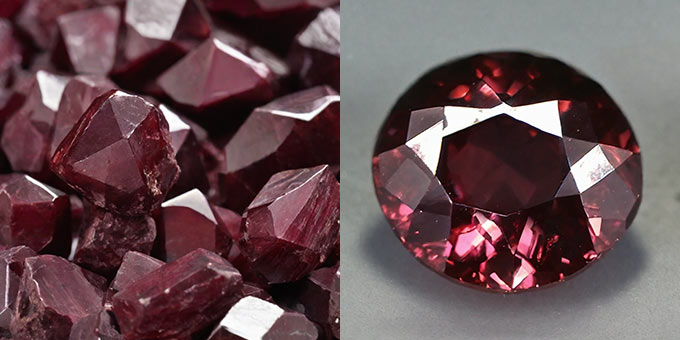
Almandine comprises approximately 95% of the earth’s garnet reserves, and its chemical formula is dominated by iron and aluminum silicate. Gem-quality almandine emerges in hues from pure red to reddish-purple, with the deepest shades found in metamorphic rocks. Some of the finest originate from pyrope-rich Sri Lankan deposits, exhibiting intense saturation and transparency. Furthermore, measuring 7.5-8 on the Mohs scale, almandine displays brilliance and durability ideal for jewelry use. Its attributes and wide availability in radiant reds make almandine one of the most versatile garnet types.
Spessartine – Orange-red Garnet
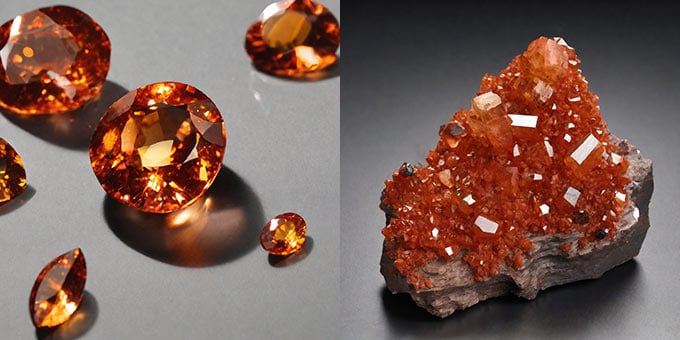
Spessartine, a striking orange-red garnet, derived its name from the Bavarian forest, the region of its discovery. Its chemical composition centers around a manganese-rich silicate formula. Gem varieties range from deep orange to reddish-purple depending on manganese concentration. The hardness is 6.5-7.5 on the Mohs scale. Spessartine gained popularity during the Victorian era for its brilliant pegmatite specimens mined in Austria. Besides, Colorado has also yielded notably large chrome-spessartine crystals up to 20 pounds. Presenting bright, saturated hues reminiscent of rubies, the gem makes a desirable alternative for antique and period jewelry seeking such vivid coloration.
Colorful Garnet – Grossular
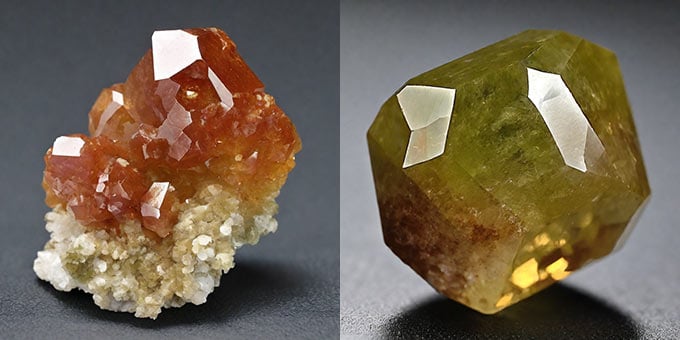
Grossular is a colorful garnet variety in greens, yellows, and oranges. Its calcium aluminum silicate composition yields gemstone forms through contact metamorphism in limestone. Historically sources included Austria, Norway, and Sri Lanka, while today, Namibia and Tanzania produce fine specimens. Traces of elements like vanadium result in colors ranging from pale pastels to vibrant emeralds and citrines. Fluorescence under ultraviolet light distinguishes it. In addition, large crystals over 250 carats offer lustrous gems for carvings due to the 6-7.5 hardness on the Mohs scale.
Andradite
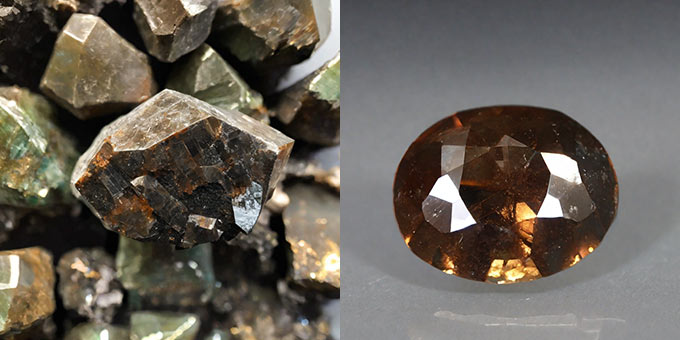
Andradite typically appears dark green but also black or yellow-brown due to its calcium-iron silicate composition. Notable for its extreme hardness of 6.5-7.5 on the Mohs scale, andradite finds use in abrasives for grinding and cutting. The finest gem materials emerged from pyrometamorphic rocks in South Africa, Namibia, and Norway. Sometimes, dark green gemmy varieties also serve as an alternative to emeralds in jewelry. Larger stones up to 10 carats have been seen historically from Franklin, New Jersey. Besides, andradite’s durability, density, and varied colors have made it a versatile industrial and ornamental garnet.
Uvarovite
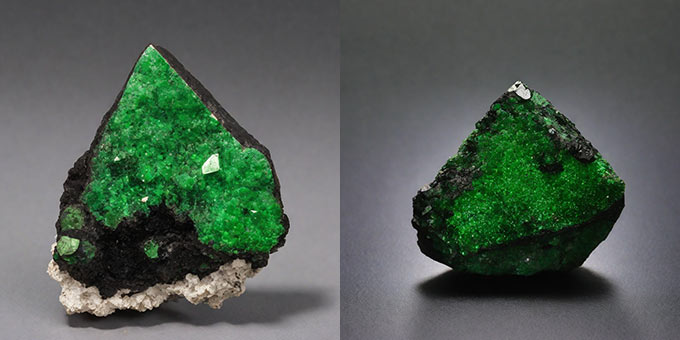
Uvarovite is a scarce and exotic garnet variety known for its beautiful emerald-green hue. Chemically, it is composed predominantly of calcium and chromium silicate. Rarely does uvarovite exceed 1 carat in size, and fine gemstones exhibit a highly intensive green color. Major occurrences have been in Siberia, Canada, and Russia. Furthermore, as the hardest of all garnets at 7.5-8 on the Mohs scale, uvarovite possesses an adamantine luster. And its value increases exponentially with the hue quality and clarity within inclusions. Exceptional green cabochons or trillions above 0.25 carats will command high prices due to limited sustainable sources for this desirable ornamental stone.
Emerald – green Garnet – Tsavorite
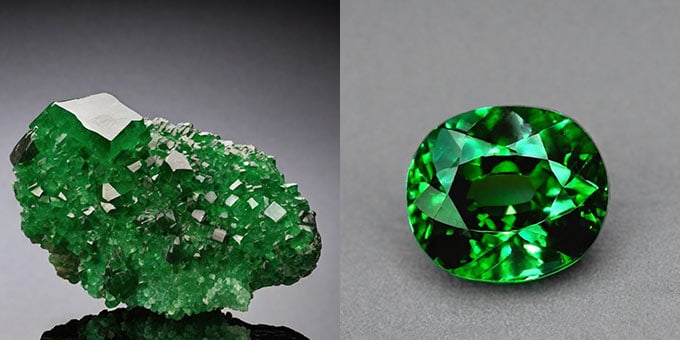
Tsavorite is a distinctly mint to emerald-green garnet variety that was not formally described until 1967. Its chemical makeup is predominantly magnesium- and chromium-bearing silicate. Sources of this garnet are limited to remote alluvial deposits in eastern Kenya, where mining in its initial boom from 1974-1980 excavated over 250,000 carats, including gems up to 15 with a vivid color saturation. Moreover, measuring 7.5-8 hardness, tsavorite remains highly prized for jewelry. Consequently, while availability has expanded through continued Taita Hills mining and synthetic production, natural crystals remain exceptionally desirable. Their striking green shade commands lasting appeal among gem varieties.

